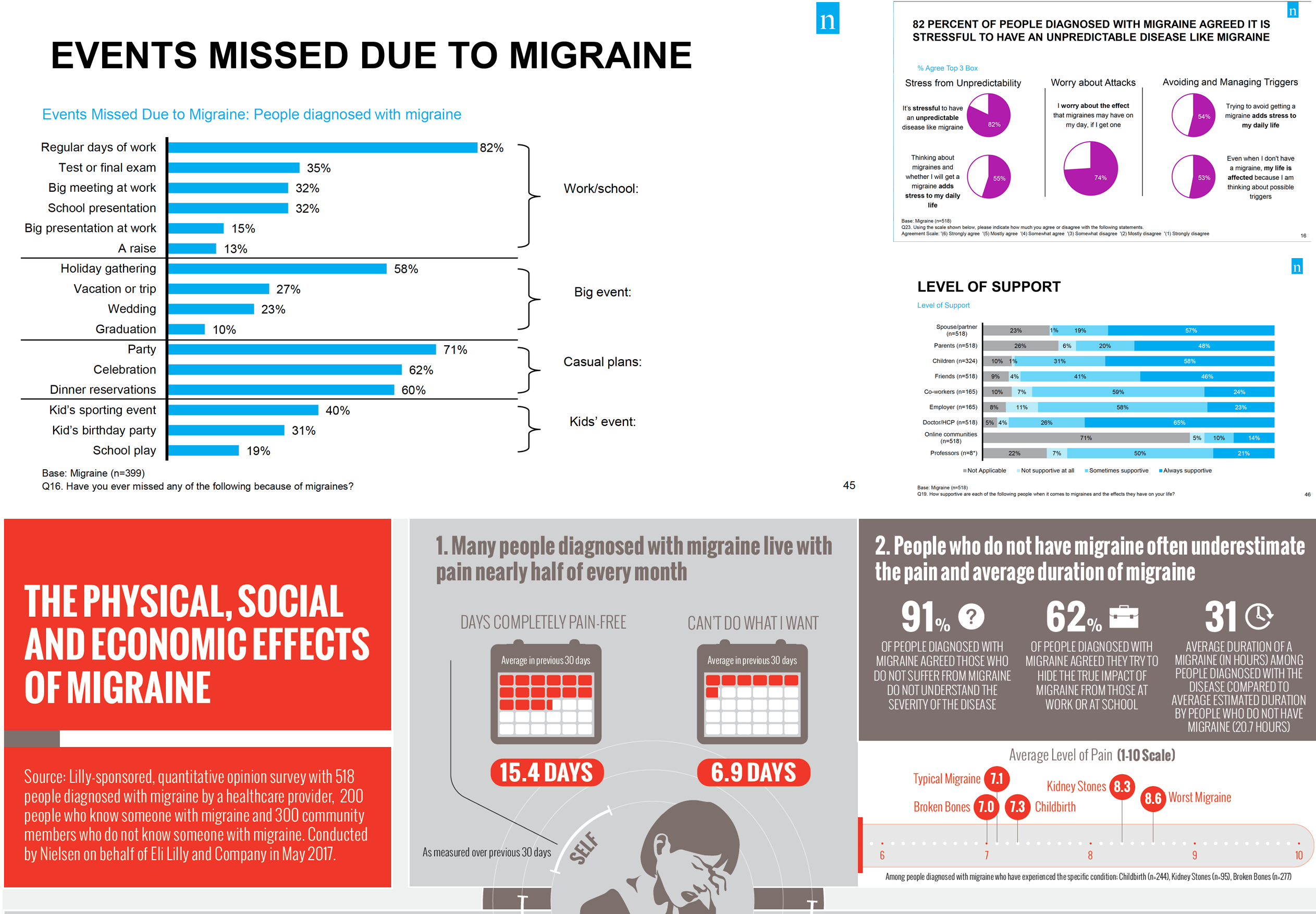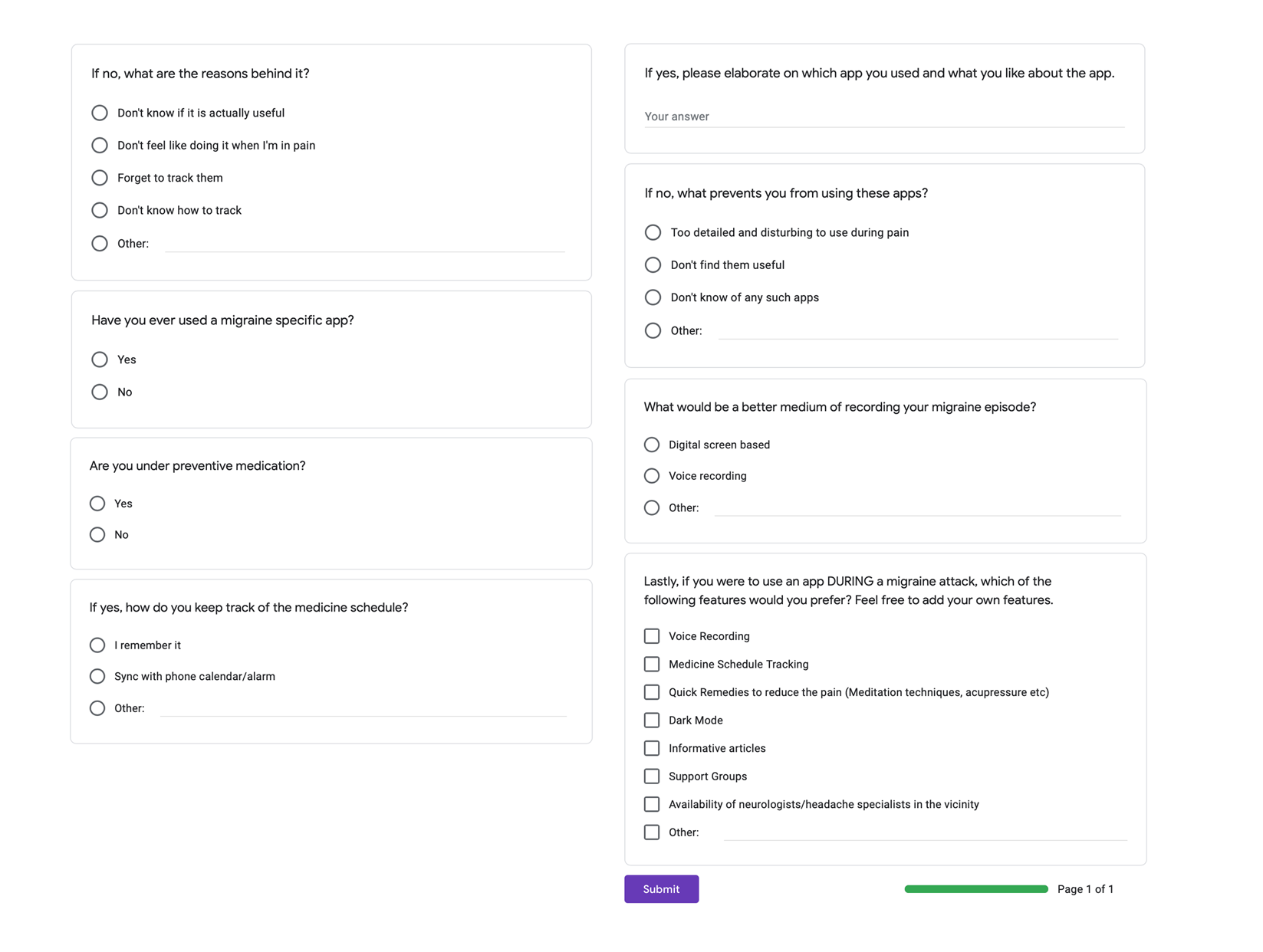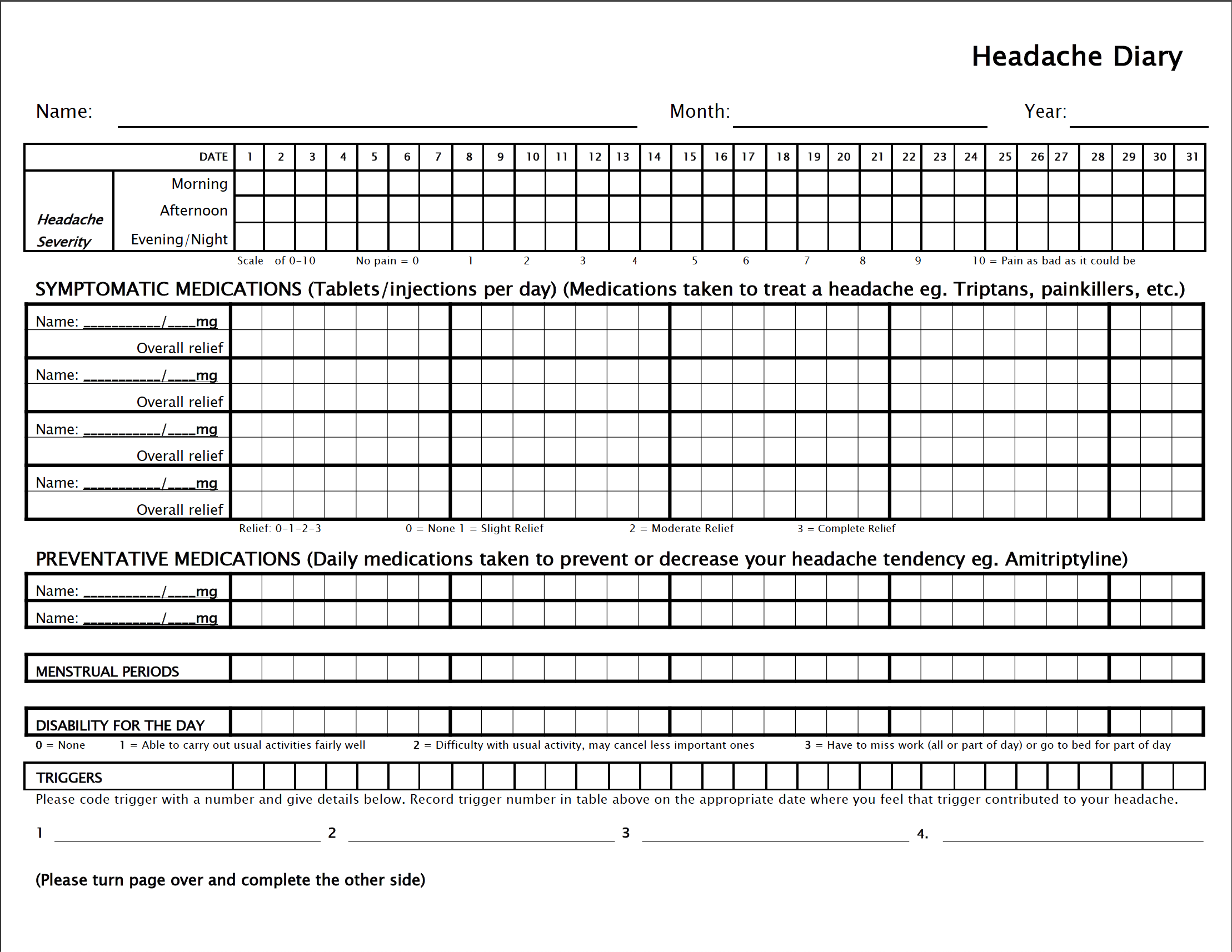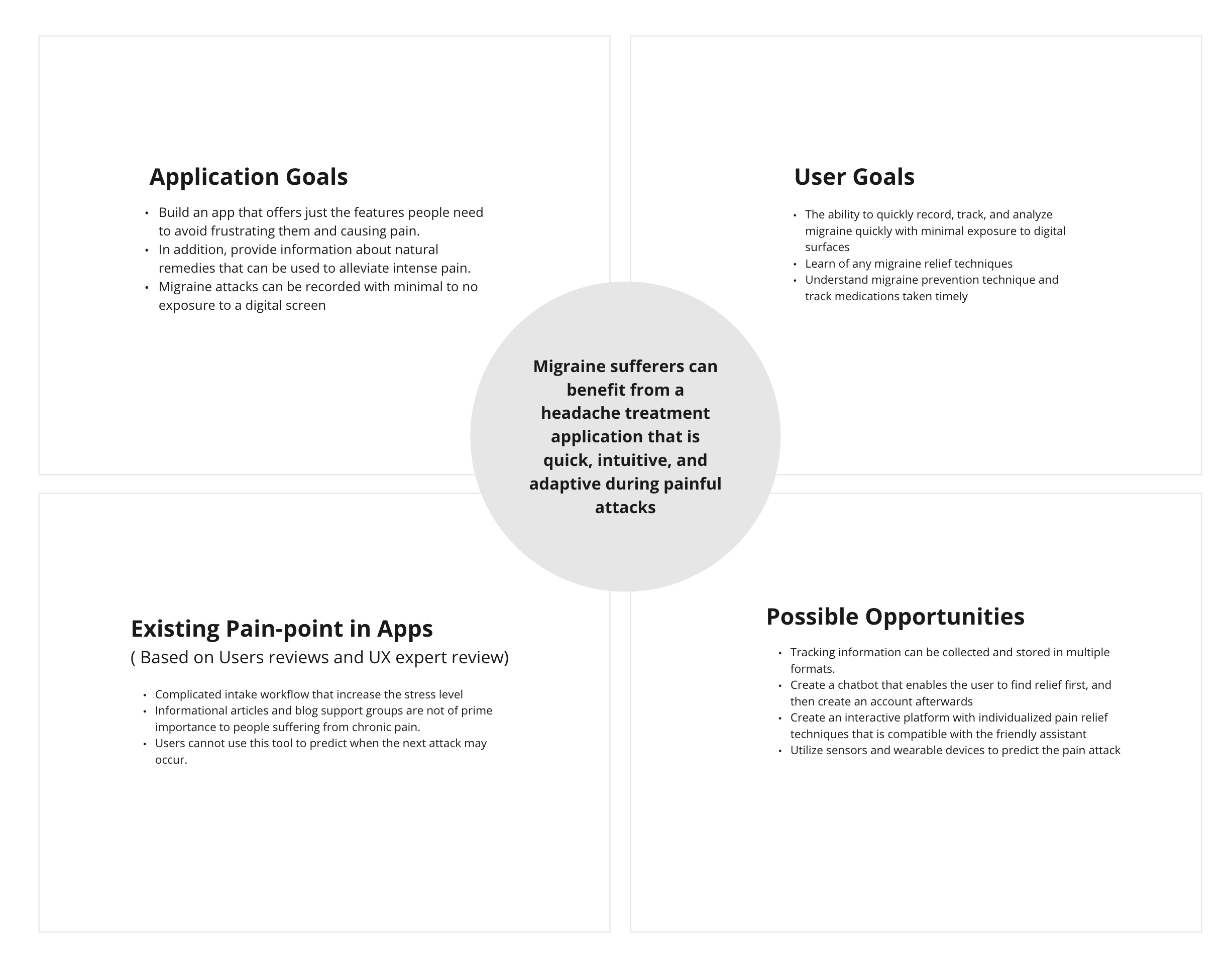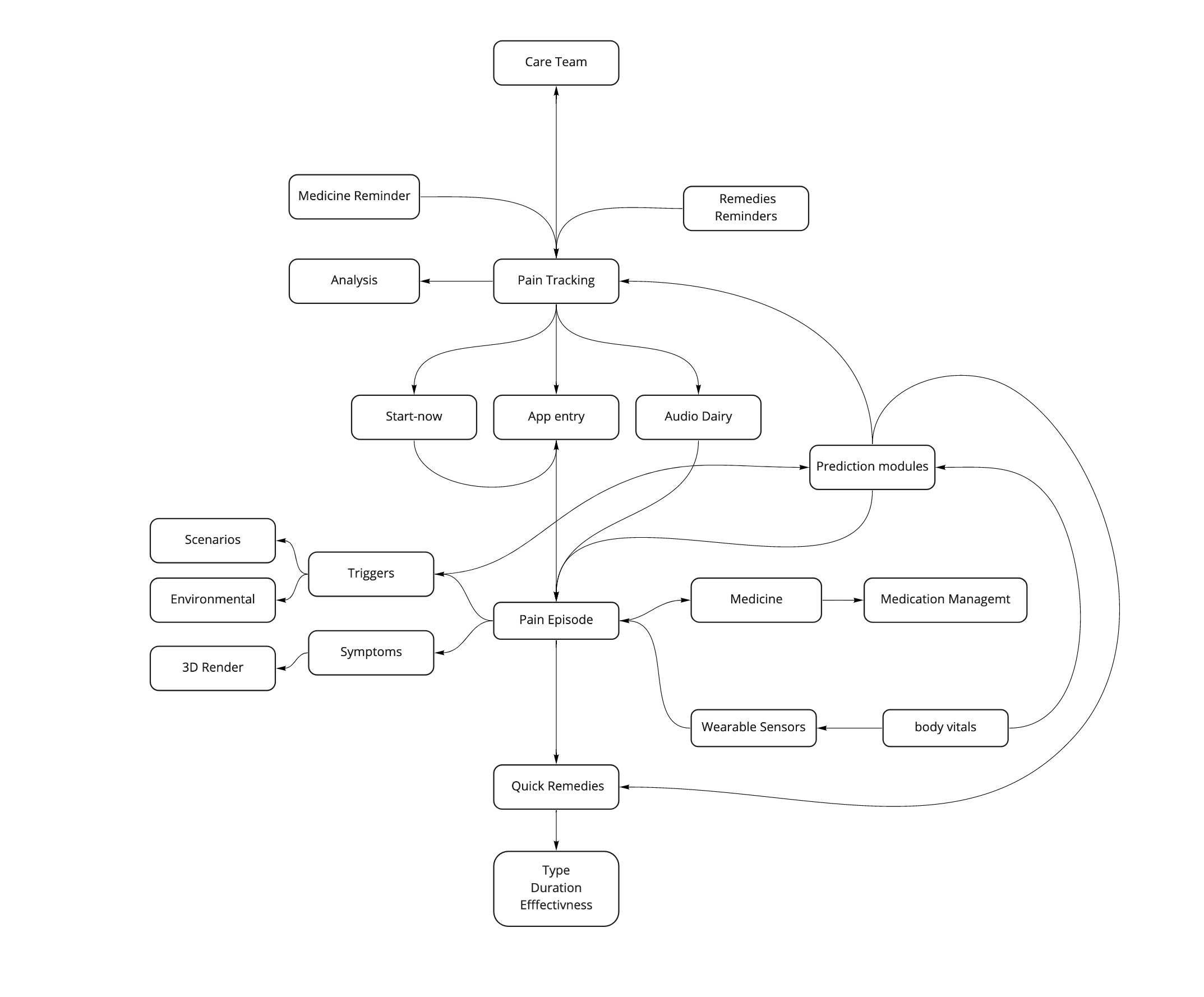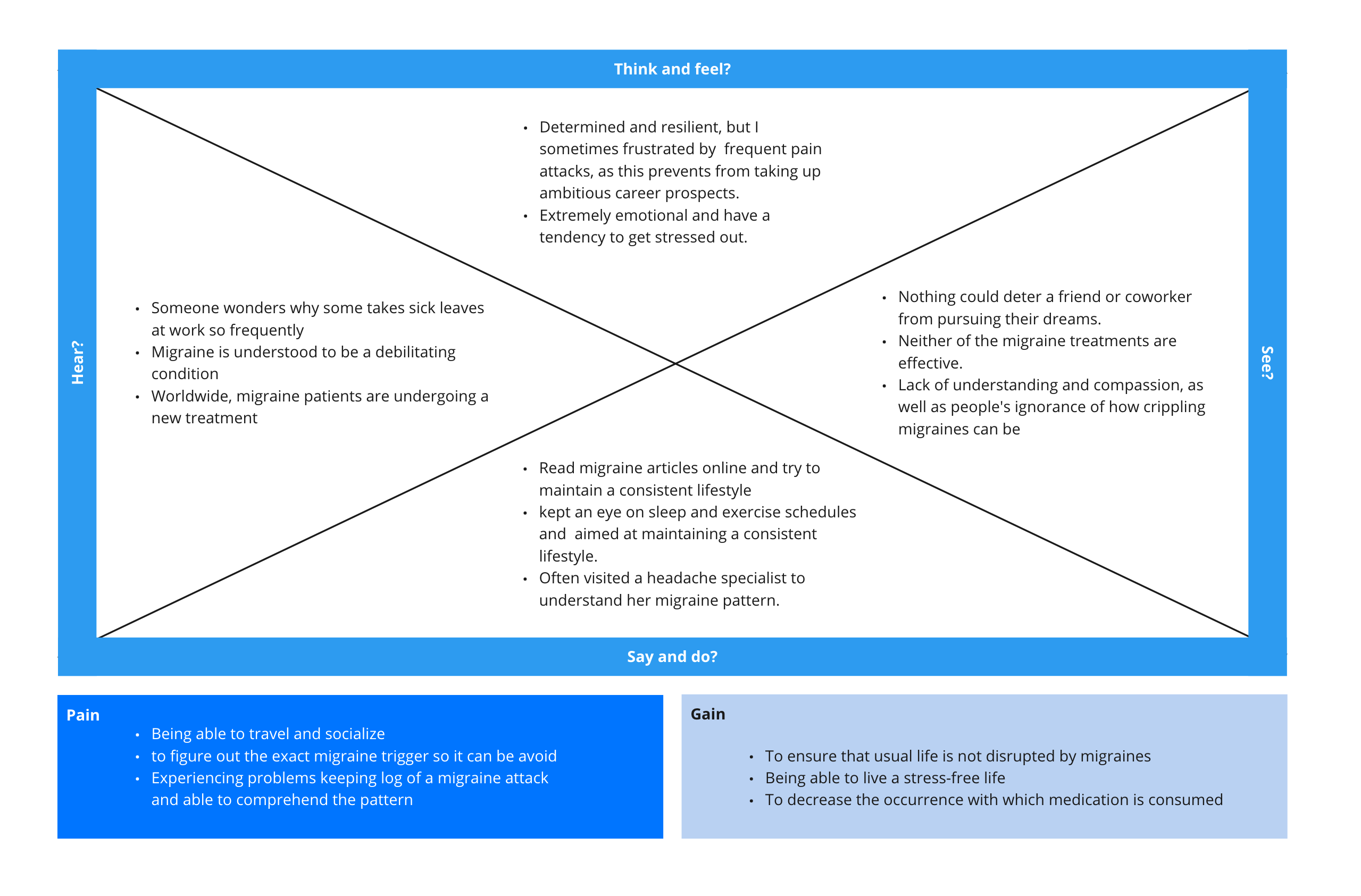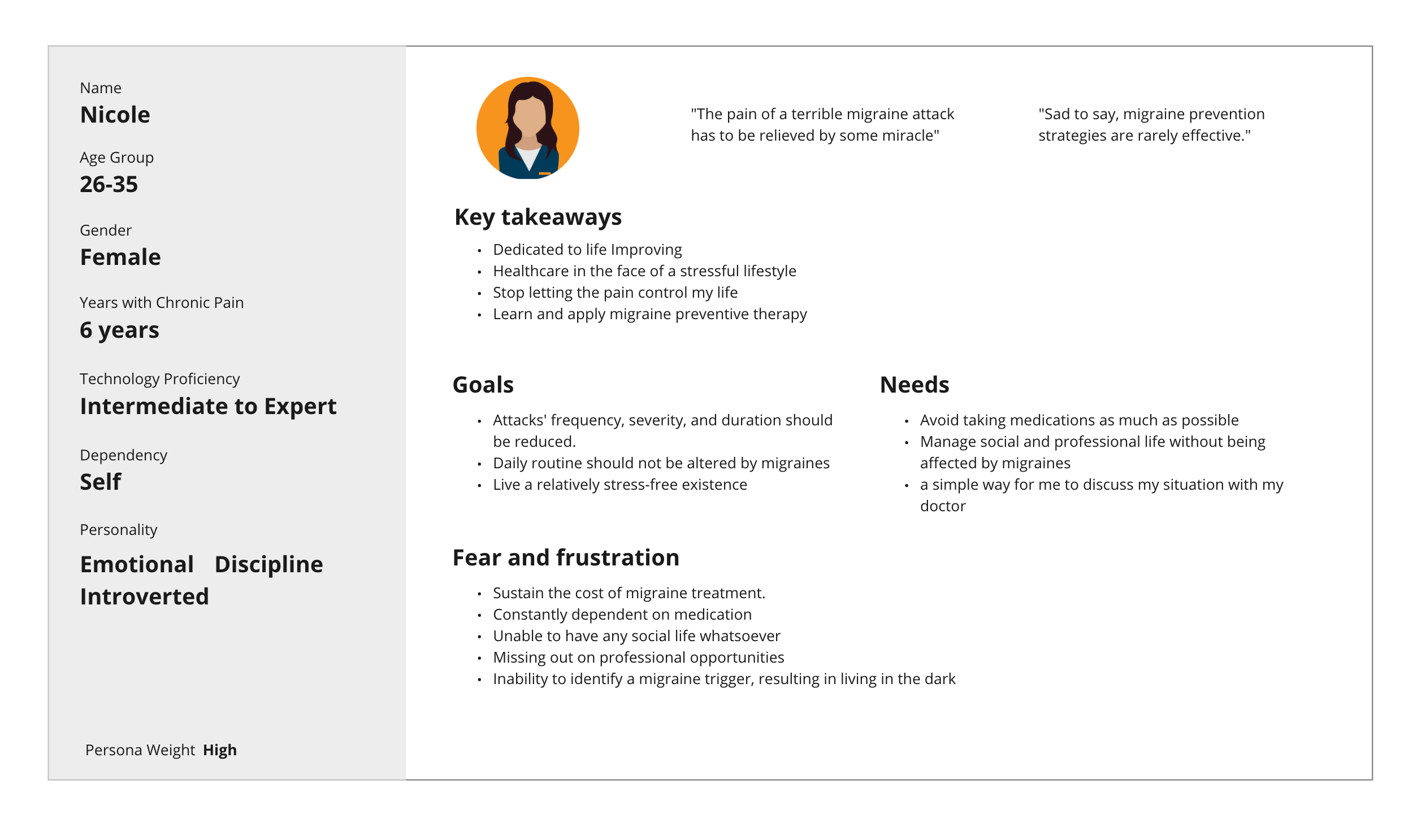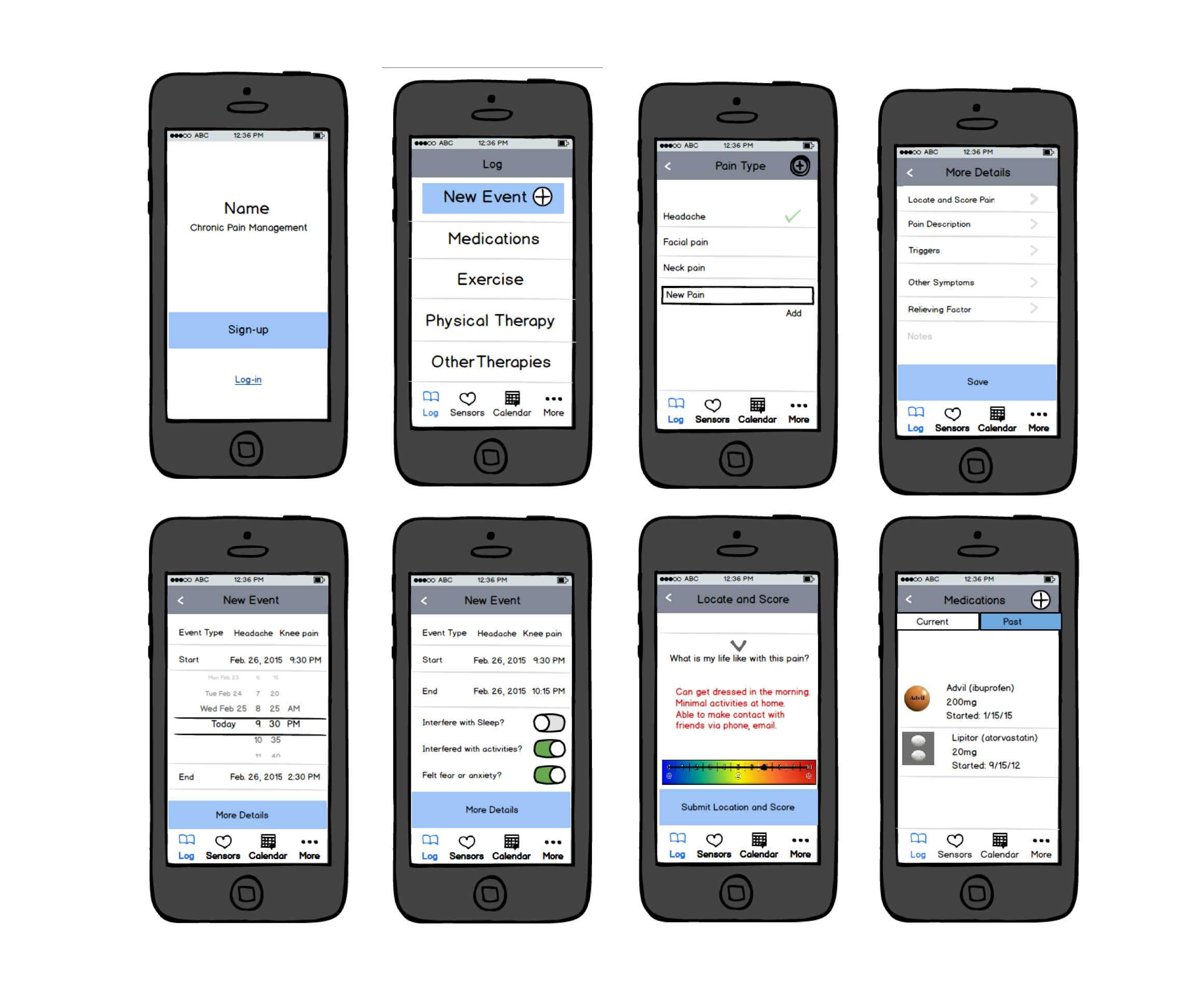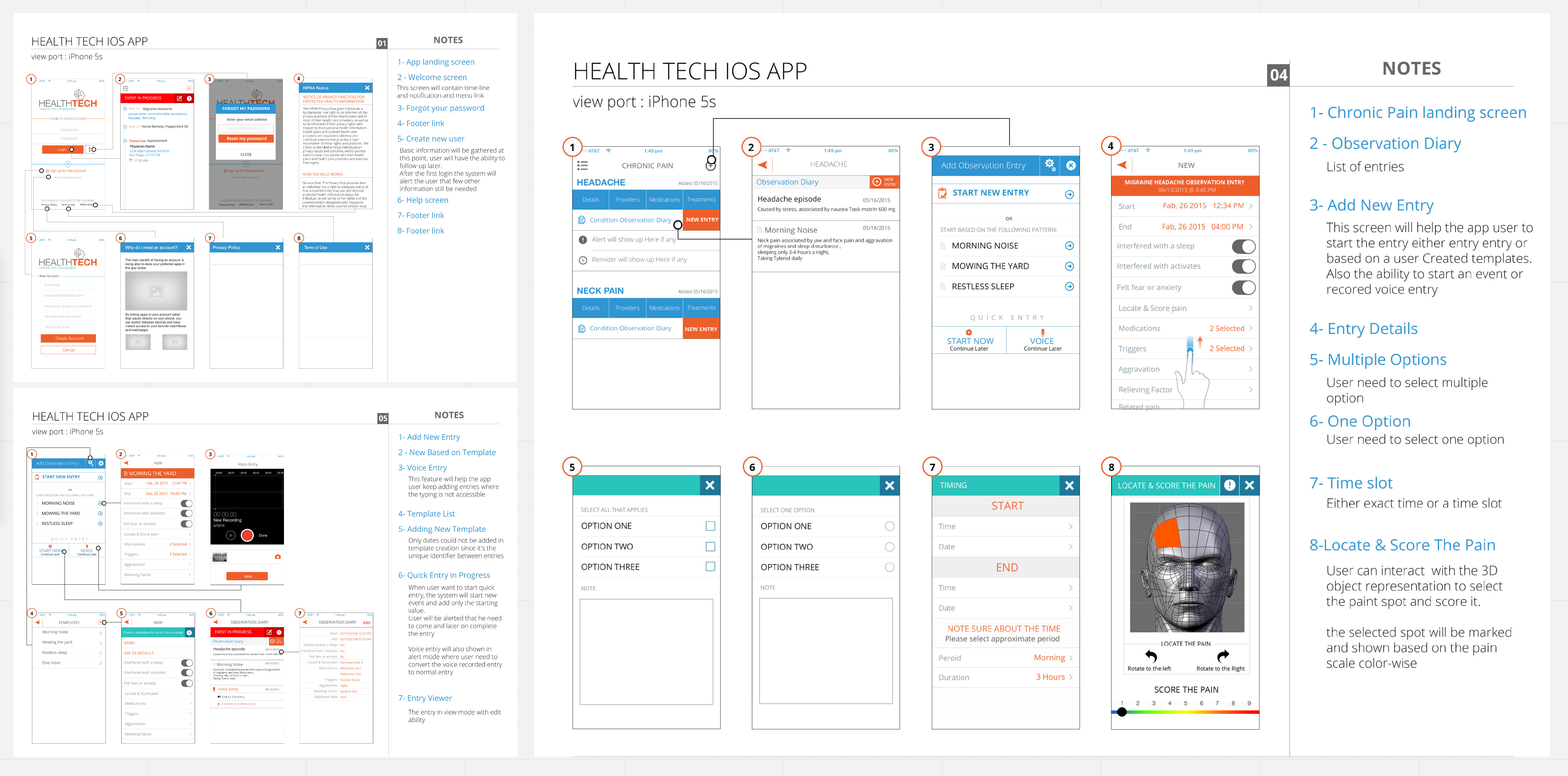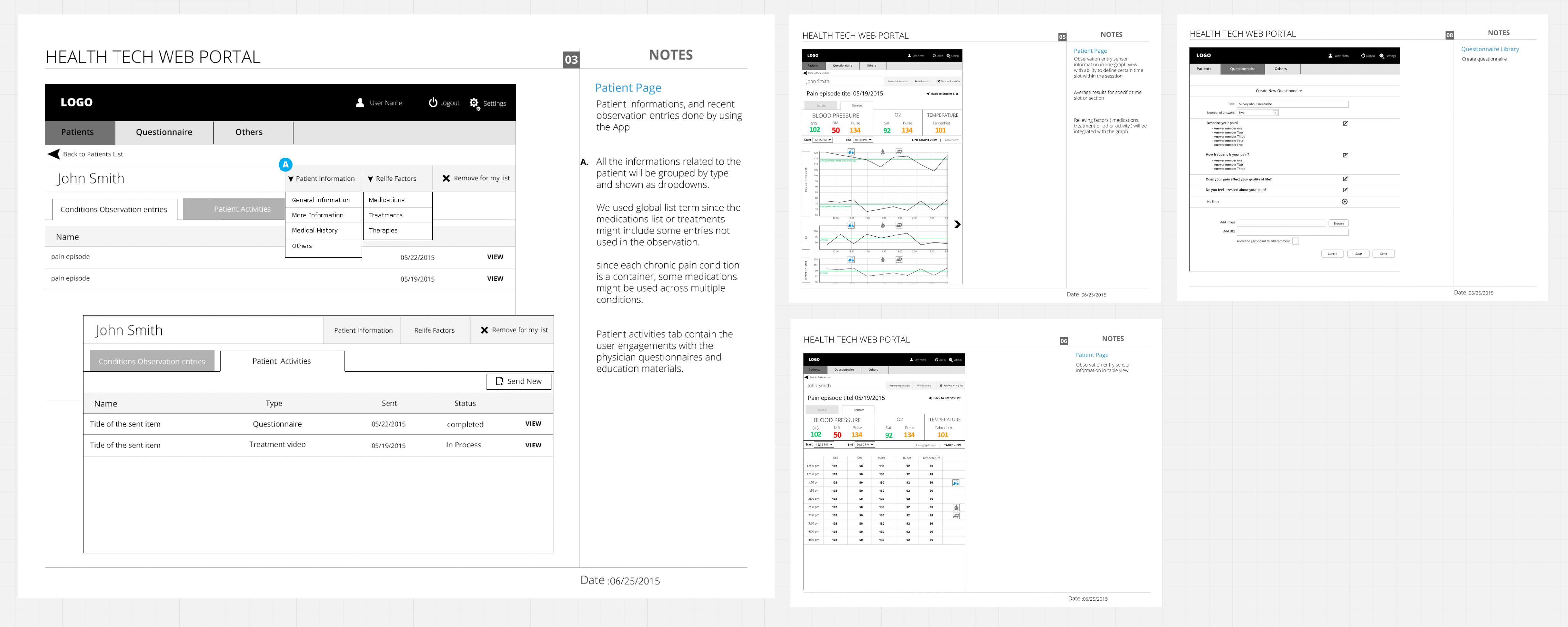CHRONIC PAIN MANAGEMENT SYSTEM
THE PROBLEM
Despite decades of research, doctors have few tools to measure pain objectively. Generally, they ask patients to rate it themselves from one to 10 or point to the cartoon face on the wall chart whose expression best matches how they feel. The owner wanted to understand the journey of existing patients and providers to identify unmet need an open opportunity, With the following assumptions in mind:
- Interrupted Chronic Pain Care Processes
- Repeated visits to hospitals and the Emergency Department
- Inability of patients to follow the progress of their chronic pain care
- Inadequate 24/7 Access to Health Records by patients and providers.
- Inability for Multiple Providers to Access Patient Records
- Insurance coverage challenges
Potential solution
Building a chronic pain platform with software and hardware components, The platform is an Integrated System of Health Data, Sensors and Communication, Greatly Enhancing Chronic Pain Care, Diagnosis and ManagementDesign Process

1- Fundamental Knowledge
I started by building the fundamentals to define a meaningful and actionable human-centered problem statement, broad enough for creative freedom and narrow enough to make it manageable. Use of three main sources: hard-copy, digital, and social media and migraine blogs
2- Building Empathy
Given the client"s limited budget, we designed exploratory research plans (qualitative and quantitative data sources) that gathered in depth data to set the baseline of the potential user base (Archetypes).
- Market Research Studies (second-hand data)
- Survey
- Individual 1:1 Interviews user research interviews with 16 interested patients and physicians to help uncover unmet needs and opportunities
- Dairy study to understand the lives of 3 patients a week
3- User Alignments
The research resulted in
- Three types of potential customer personas and a clear understanding of them (Patient, Caregiver and Physician)
- Product ideas for other platforms to consider
5- Usability inspections
A click-through prototype was used for formative usability testing with 5 users and two different scenarios. Evaluation aspects included:
To validate the Signifiers, Alignments and Feedbacks I used The ISO/IEC 9126-4 Metrics as a guiding principles which recommends that usability metrics should include:
- Effectiveness: The accuracy and completeness with which users achieve specified goals
- Completion Rate
- Number of Errors
- Cue recognitions
- Efficiency: The resources expended in relation to the accuracy and completeness with which users achieve goals.
- Time-Based Efficiency
- Overall Relative Efficiency
- Confusing/reading moments
- Satisfaction: The comfort and acceptability of use.
- Task Level Satisfaction
- Test Level Satisfaction
- System Usability Scale
Outcome & Lesson Learned
For the project
This project aided the owner in identifying a clear need for a digital tool to serve People with Chronic Pain who require compassionate, calm, and rational pain treatment practices. Above all, they require a strong and respected collective voice in the ongoing struggle. Revealing that chronic pain patients are underserved
For myself
It helped me to gain a better understanding of user experience in health care services, the various types of nuances that must be carefully considered, and, most importantly, developing empathy for people with health conditions. I am thankful to the users who were willing to share their concerns with me while I designed this app, and I hope to be involved in future opportunities in this field.



